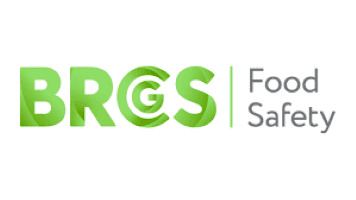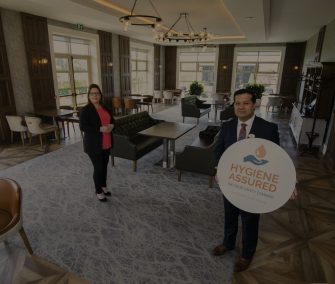BRC (British Retail Consortium): What is it and what are the benefits?
What is BRC?
Within the food industry, there are numerous standards that need to be followed to ensure the safety of all food produced. So, what is BRC and what are your organisation’s responsibilities in meeting it?
The British Retail Consortium (BRC) first published its Global Standard for Food Safety in 1998. Developed to help the food industry comply with UK and EU food safety laws, it’s become an internationally recognised benchmark for best practice in food safety, quality and responsibility, with over 17,000 BRC-certified sites worldwide.
Now in its ninth issue, the standard gives organisations working in the food industry a framework for managing the safety, integrity and quality of their products and services. This includes retailers, manufacturers, importers, caterers and ingredient suppliers. Many retailers across the UK, the US and Europe will only do business with suppliers who have passed an audit and been accredited by a BRC certification body.
Below, we take a closer look at what the standard covers, what the latest issue (August 2022) introduced, and how your organisation can benefit from accreditation.
What the standard covers
The Global Standard for Food Safety sets out requirements for how processed foods and other products (for example, branded foods; retailer-brand foods; or ingredients used by food service companies, caterers, or manufacturers) should be made or prepared. Only products that are manufactured, prepared, or stored at the site that’s being audited as part of the certification will apply.
The standard is divided into seven sections:
1 – Senior management commitment and continual improvement
Your senior managers must commit to implementing and continually improving your organisation’s food safety processes.
2 – The Food Safety Plan – HACCP
Having a Hazard Analysis and Critical Control Point (HACCP) plan in place allows you to identify and manage any biological, chemical, or physical hazards that could make the food you produce unsafe to eat.
3 – Food safety and quality management system
You should implement a system that enables you to produce safe products, meet customers’ expectations and ensure staff are well trained.
4 – Site standards
Sites on which you manufacture or prepare food must be laid out, maintained, cleaned, and secured according to strict standards. Your organisation must also meet requirements relating to the control of pests and foreign bodies.
5 – Product control
For your products to be considered safe, you need to demonstrate that you properly manage things such as allergens, provenance, and product testing.
6 – Process control
You must implement your HACCP plan from day to day and have effective procedures in place for ensuring you manufacture your products to the correct quality.
7 – Personnel
This part of the standard covers training, protective clothing, and hygiene. You need to ensure that all personnel are equipped with everything they need to carry out their duties in a safe manner.
BRC 9 aims to promote best practice and ensure that organisations are working to strong, consistent standards. By gaining the BRC certification, you can assure your customers that you are highly competent at monitoring and continually improving the quality and safety of your product, and that you’ve taken every possible precaution to prevent problems should quality and safety ever be challenged.
What’s in the latest version?
BRC periodically review and update the standard to reflect changes in food safety laws and any new risks that may have emerged. With issue 9 of the standard being published in August 2022 below we have compiled a list of some of the most notable changes and additions:
Traceability and food fraud
Ensuring the safety and integrity of food products is paramount for companies. In the event of a contamination or a potential safety concern, having the ability to trace and swiftly recall these products is crucial. The updated requirements in section 5.4 now emphasize the need for companies to safeguard their purchased materials against vulnerabilities within the supply chain. Traceability is key to ensure customer confidence and satisfied regulatory bodies.
Audits
With the latest advancements, businesses are now provided with a range of options to choose from, tailoring the auditing process to their specific needs and preferences. These options include:
Announced on-site audit: The company in question will be notified in advance, allowing them to prepare for the audit and ensuring that all relevant stakeholders are available for the assessment.
Announced blended audit: A combination of online and on-site auditing, this approach combines the convenience of remote document review with a traditional on-site audit. This blended method enables companies to streamline the audit process while ensuring a thorough evaluation of their operations.
Unannounced on-site audit: Although this option remains unchanged, version 9 of the protocol mandates that, within a three-year cycle, at least one audit must be unannounced, regardless of the chosen option (on-site or blended).
This update underscores the growing emphasis on surprise assessments, with BRC demonstrating their significant rise of 35% in the past two years alone. promoting transparency and accountability within organizations. Unannounced audits serve as a powerful tool for assessing a company’s compliance and integrity, as they offer an unbiased snapshot of their practices without prior preparation.
Labelling and withdrawal control:
In the latest update, clause 6.2.1 has been given a boost to require companies to have robust process in place to ensure that labels are used in accordance with their intended purpose, and any inconsistencies are promptly investigated. By following this requirement diligently, businesses have the potential to reduce the number of recalls caused by the use of incorrect labels or even the placement of products in the wrong packaging.
Product authenticity:
Product authenticity section (5.4.1) has notably improved. One such enhancement is the introduction of a requirement for individuals or teams responsible for vulnerability assessments to possess knowledge of the underlying principles. Meeting this requirement might involve providing training on vulnerability assessment methods. With a better understanding of vulnerability assessments, organizations can take proactive measures to safeguard their products from counterfeit or fraudulent activities. It’s a crucial step towards maintaining trust and protecting consumers.
What are the BRC benefits?
The benefits of BRC certification include the following:
- Protects your brand and your customers
- Allows you to do business with those retailers, manufacturers, ingredients companies and food service organisations who specify certification as part of their approval process
- Helps reduce the number of product recalls, customer complaints and rejected products
- Incorporates food safety management systems and internationally accepted best practice to ensure the safety and quality of products
- Audits are carried out by trained and experienced certification bodies working to BRC Global Standards
The BRC Global Standard for Food Safety was the first standard to meet the Global Food Safety Initiative (GFSI) benchmark, which means it’s accepted by many of the world’s biggest retailers, such as Tesco and Walmart. Achieving the certification ensures your customers have confidence in your products.
Contact us for more information on how we can assist with BRC.


